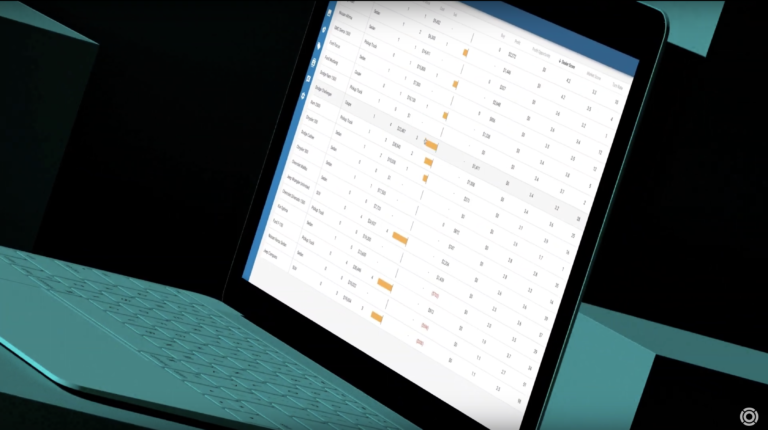Buy and sell the right vehicles for your unique needs. We use a powerful combination of market and transaction data so you can easily manage your inventory once you have it in stock.
Nine times out of 10, a core vehicle will sell for a higher price than its going market price. Two industry veterans provide a three-step process for stocking your lot with core inventory.
By Robert Cowan and Sandy Davis
We know that turning and burning through inventory won’t get you to your profit goals, because successfully managing inventory requires a delicate balance between cost of goods, profitability, and, yes, how quickly you can sell it. We call it the Ideal Inventory Model™, an approach designed to help you stock core inventory — or vehicles that deliver above-average grosses in below-average turn times.
There are many ways to determine your dealership’s inventory, and there are plenty of software tools that can help. In this article, we’ll walk through a proven process for stocking core vehicles.
Step 1: Determine Your Core
The reason you need to identify your dealership’s core inventory is, nine times out of 10, a core vehicle will sell for a higher price than what it’s going for in the market. Nonluxury dealerships, both import and domestic, generally operate best when core vehicles account for 45% to 55% of their preowned inventory.
The Ideal Inventory Model (IIM) is the backbone of Inventory+ and how we determine core at DealerSocket. It looks at your sales history to determine if a vehicle would be a profit driver at your unique dealership, and not just a market performer. Each vehicle will receive a score, or TrueScore, on how it performs at your dealership or in your market. If you’ve never sold a car similar to that, predictive algorithms will pull similar vehicle transactions to help you make a data-driven decision.
It’s important to not rely solely on live market data because other dealers in the same region are getting the same recommendations, which increases wholesale costs for the same vehicle. That often leads to those profit-squeezing, race-to-the-bottom pricing wars. The advantage to using Inventory+ is its algorithms are constantly updating as transaction data flows in daily. That allows the tool to look for areas of improvement when developing your store’s customizable buy/sell list, which the system links to matching available vehicles (such as missed appraisals, in group trades, or auctions).
To determine your core, we focus on profit per day – or vehicles that drive you profit while turning within your desired time frame. It’s important to be able to identify if a vehicle is core or not to your dealership at all stages within a vehicle lifecycle: acquisition to disposition.
Step 2: Acquire Profit Drivers
When acquiring a car, Inventory+ will let you know right away if it’s a profit driver for your lot with TrueScore. Each car on your lot has two TrueScore metrics: one for how the vehicle will perform at your dealership, and one for how that vehicle performs in the market. Both scores are measured on a five-point scale.
Your dealership score is based on your store’s transactional history, while your market score indicates how well the vehicle performs in your local market. The reason why that’s important is some vehicles may perform differently at your store than in your local market, while others might not be profit drivers at your dealership but are high market performers. Your market score is also important when you have no transactional history on a particular unit.
Now, an average car will have a score of about 2.5, while a high-performer will have a score of three or higher. TrueScore also provides the vehicle’s profit per day, average turn time, how it ranks against similar vehicles your dealership sold in the last 30 days, average sales price compared to the market, and much more.
We recommend sourcing vehicles from trade ins, missed appraisals that slipped through the cracks, in group trades, or auctions. While acquiring cars from these sources, you’ll want to make sure your dealership’s TrueScore is at least a 2.5.
When working an appraisal, simply plug in the vehicle identification number into Inventory+’s Single Page Appraisal. The system will immediately extract transaction data from the DMS to provide stocking and pricing recommendations, or the vehicle’s TrueScore. Based on this score, you’ll immediately know if the car will be a profit driver, or loss to your dealership.
As you look to buy cars, refer to your buy/sell list. The stocking recommendations are the result of our Ideal Inventory Model, so you’ll see exactly which cars you need to stock to drive profit per day. You can filter by how many vehicles you already have in stock, filter by your dealership score, market score, cost, profit opportunity, and more. Once you know which cars to purchase, you can source those vehicles directly through Inventory+.
Step 3: Know Your Exit Strategy
You should determine your exit strategy in two places: as soon as a car is in the appraisal process and during reviews of existing inventory (every 10 or so days) to determine any vehicles that have yet to turn.
Remember, as you’re appraising a car, if it’s TrueScore is under 2.5, it’s probably best to get rid of that car before trying your hand at selling it. If a trade in will not be profitable at your dealership, make sure to be transparent and manage a customers expectations. On an ongoing basis, you should use your inventory manager tool to review how your existing inventory is performing. It’s a good idea to pull up the vehicle’s market data every 10 days after it has been traded to see how it differs from the data used at the time of the appraisal. This step will tell you if you need to adjust your pricing up or down.
Your buy/sell will also recommend vehicles to sell, based on unique dealerships performance. If you determine a vehicle needs to be disposed, you can easily trade within your group or launch it to auction from Inventory+.
Finding inventory core to your unique dealership is important. It will allow you to sell vehicles profitably, while maintaining turn. We recommend finding a solution that helps you aggregate your dealerships performance so you’re not relying solely on instinct or market performers to stock your lot.
Robert Cowan serves as a Senior Customer Success Manager for DealerSocket and has been in the automotive industry for 42 years and consulting with Inventory+ for 14 years. Sandy Davis has been in the automotive industry for 22 years and serves as one of the company’s Strategic Growth Managers.
As the competition goes from trading stocks to precious metals to undo the race to the bottom it created, Inventory+ reminds all that it has always been about profit time.
By Gregory Arroyo
I was fooled, at least during my days covering the F&I trade for an industry publication. And I was reminded of that on Jan. 27. That’s when Automotive News published an article on Dale Pollak’s “new truth of used-car profitability.”
My excuse is I covered F&I, which meant I was limited to “drive-by” reporting when it came to the inventory-management space. What I needed was a connection, and, well, the credit crisis that preceded the Great Recession of 2009 and its impact on inventory-management strategies provided just that. That led to this December 2009 article: Stock Up/Stock Down.
The piece quotes the two leading voices in the inventory space at the time: Pollak and the team at Inventory+. Both were leading the charge in turning inventory-management solutions into pricing tools. Inventory+, according to my sources, was the choice of many of the industry’s big dealer groups, while Pollak was the newcomer. And, yes, he was making a lot of noise at the time.
I remember the blog he wrote in May 2008 (The Core is Rotten), where he bashed Inventory+ and the Ideal Inventory Model that serves as its foundation. So you can imagine my reaction when I saw the video Dale posted in late 2018, the one in which he semi-admits that maybe he was wrong. And you can imagine my reaction when he doubled-downed in that recent Automotive News article, blaming dealers for not paying to get his fix for a problem his software created.
What troubles me is my brethren on the media side have decided to let Mr. Pollak off the hook, allowing him to pin margin compression on some “dramatic turn” in the spring of 2016.
Interestingly, Dale rolled out Stockwave in March 2016, but, as you guessed it, his press release and Automotive News failed to mention that. Instead, Dale uses both platforms to tell dealers to adopt his new software “if they want to be profitable.”
Well, Dale, I’m not sure your customers ever fully embraced your now-debunked theory. “I’d never use [vAuto] the way Dale Pollak … recommends you use it,” wrote Jim Ziegler in a July 2015 column in F&I and Showroom magazine. “I suggest using it as a buying and selling guide, but not a pricing guide. I just believe every used car should have a chance to make a decent profit.”
Now, Pollak has gone from managing inventory like trading stocks to managing it like trading precious metals. And according to his team’s analysis, dealers wrongly managed their best investments, their platinum cars, like their worst investments, and vice-versa. So, the trick is to hold onto those profit drivers and rid your lots of those bronze cars.
In other words, find your core inventory.
So, how will you determine your bronze and platinum vehicles? Well, Dale and his team have gone and developed a new secret algorithm that weighs three main factors — cost of goods being one of them. I singled out that factor because Dale never mentioned cost of goods before, but the Inventory+ rep I spoke to for my 2009 article did: “Simply turning vehicles and selling them quickly is not the answer, because it’s a balance between cost of goods, profitability, and how quickly you can sell it.”
He then added this: “The internet is an incredibly powerful and wonderful thing, but it can also be a wasteland of information.”
See, like Pollak’s software, Inventory+ does show users how competitively priced the market is on a specific vehicle based on how other dealers are advertising that vehicle or a similar vehicle online. But we take it a step further by displaying a market’s actual transactional data. That means the dealer doesn’t have to wonder if the price advertised online is outdated because the vehicle was sent to auction.
What really separates Inventory+ is our algorithm (yes, we have one, too) analyzes a dealer’s transactional history — about 90 days’ worth — to determine the dealership’s core inventory, or vehicles that deliver above-average grosses in below-average turn times.
So, we base our recommendations on your dealership’s unique DNA. The reason that’s important is relying on market data alone — like Pollak’s solution does — means other dealers in the same region are getting the same recommendations, which increases wholesale costs for the same vehicle (I’m sure Cox loves that). That leads to those profit-squeezing, race-to-the-bottom pricing wars. Sound familiar?
And by analyzing your historical transactional data, Inventory+ tells you what your customers are buying — not what your competitors’ customers are buying 25 miles down the road. And if you do well on a particular vehicle, there’s no reason to get down in the gutter with every other dealership engaged in a pricing war. You simply need to differentiate your profit driver with the photos you take and the description you write.
See, Dale, it’s always been “profit time” at DealerSocket.










